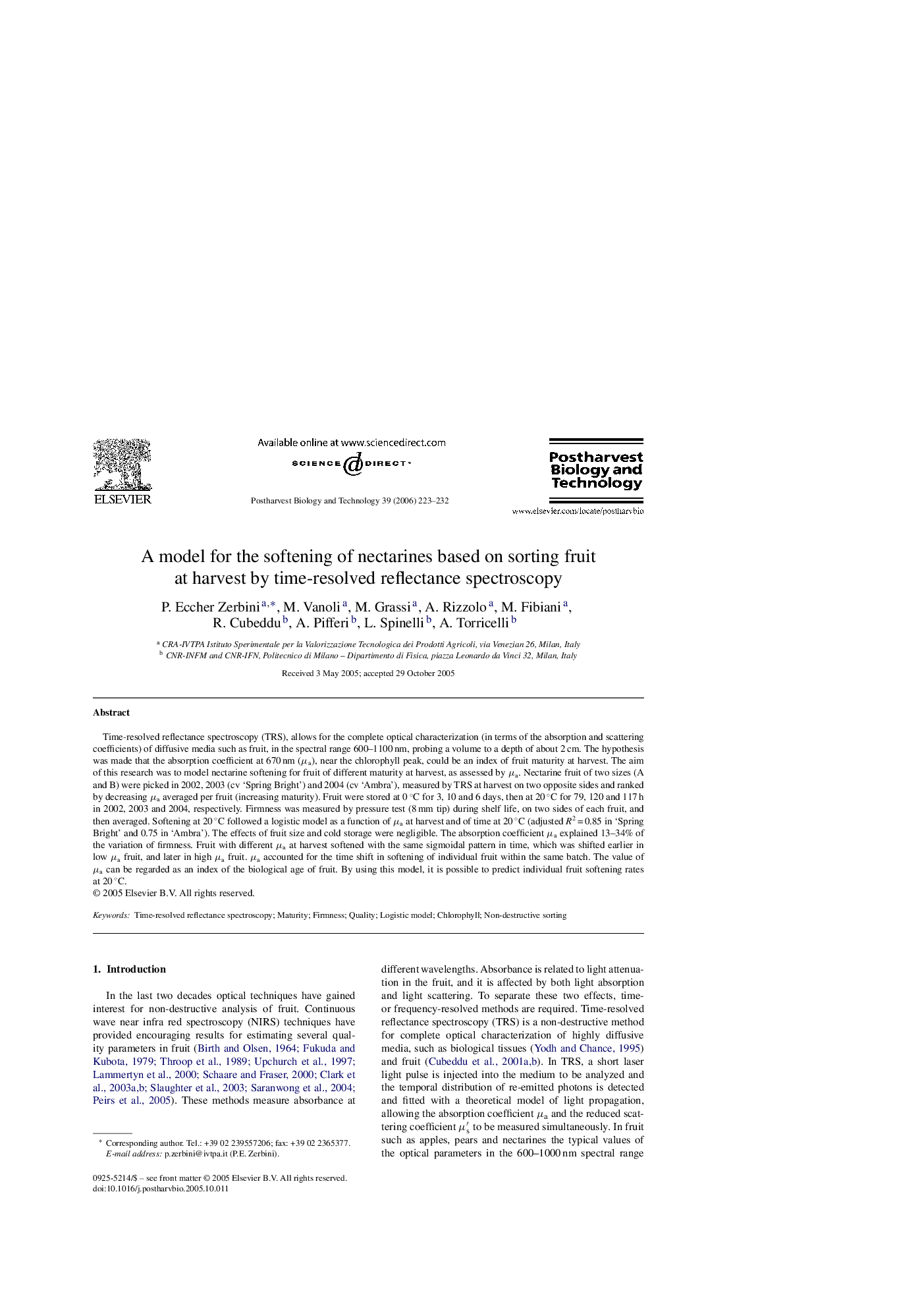| کد مقاله | کد نشریه | سال انتشار | مقاله انگلیسی | نسخه تمام متن |
|---|---|---|---|---|
| 4519988 | 1322866 | 2006 | 10 صفحه PDF | دانلود رایگان |

Time-resolved reflectance spectroscopy (TRS), allows for the complete optical characterization (in terms of the absorption and scattering coefficients) of diffusive media such as fruit, in the spectral range 600–1100 nm, probing a volume to a depth of about 2 cm. The hypothesis was made that the absorption coefficient at 670 nm (μa), near the chlorophyll peak, could be an index of fruit maturity at harvest. The aim of this research was to model nectarine softening for fruit of different maturity at harvest, as assessed by μa. Nectarine fruit of two sizes (A and B) were picked in 2002, 2003 (cv ‘Spring Bright’) and 2004 (cv ‘Ambra’), measured by TRS at harvest on two opposite sides and ranked by decreasing μa averaged per fruit (increasing maturity). Fruit were stored at 0 °C for 3, 10 and 6 days, then at 20 °C for 79, 120 and 117 h in 2002, 2003 and 2004, respectively. Firmness was measured by pressure test (8 mm tip) during shelf life, on two sides of each fruit, and then averaged. Softening at 20 °C followed a logistic model as a function of μa at harvest and of time at 20 °C (adjusted R2 = 0.85 in ‘Spring Bright’ and 0.75 in ‘Ambra’). The effects of fruit size and cold storage were negligible. The absorption coefficient μa explained 13–34% of the variation of firmness. Fruit with different μa at harvest softened with the same sigmoidal pattern in time, which was shifted earlier in low μa fruit, and later in high μa fruit. μa accounted for the time shift in softening of individual fruit within the same batch. The value of μa can be regarded as an index of the biological age of fruit. By using this model, it is possible to predict individual fruit softening rates at 20 °C.
Journal: Postharvest Biology and Technology - Volume 39, Issue 3, March 2006, Pages 223–232